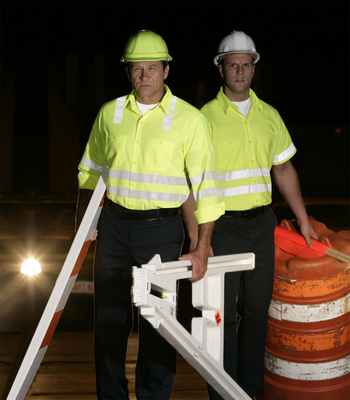As government transportation agencies throughout North America act to rebuild many aging highways, much of that roadwork must be performed during hours with heavy amounts of traffic. The U.S. Highway Traffic Safety Administration and the Transportation Safety Board of Canada are reminding roadway construction and maintenance companies of the need for heightened safety awareness to prevent needless injuries or fatalities.
UniFirst (www.unifirst.com), a provider of work uniforms and safety apparel to companies throughout the U.S. and Canada, has compiled a list of 10 important safety considerations that roadway workers should keep in mind.
Chuck Stanec, Specialty Apparel Product Manager at UniFirst, says: “A Center for Disease Control and Prevention (CDC) report shows that there were 609 fatalities in work zones in 2012. With a stronger focus on worksite safety, particularly as it applies to high visibility workwear, there’s no reason that number cannot be significantly reduced or potentially eliminated.”
- Don’t trust accessories alone, such as high visibility vests, to provide worker protection. Enhanced or high visibility shirts, pants, jackets or coveralls may be needed for workers to be better identified by drivers of moving vehicles (particularly in hot climates where roadwork is generally done during nighttime hours to minimize the risk of heat exhaustion).
- Follow the regulations and guidelines that affect your business as they apply to high visibility safety apparel. Adhere to the high visibility apparel compliance standards, such as ANSI/ISEA 107-2010, the Manual on Uniform Traffic Control Devices (MUTCD), and CSA Z96.1.
- Ensure your high visibility apparel works as it was designed to do. Keep it clean and well maintained.
- Conduct training programs to instruct workers on how to properly use and maintain Personal Protective Equipment (PPE).
- Incorporate the use of temporary traffic barriers at your worksite to provide workers with added physical protection from moving vehicles.

